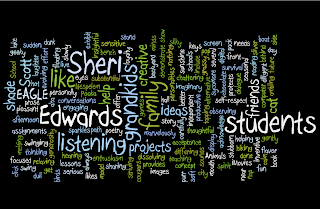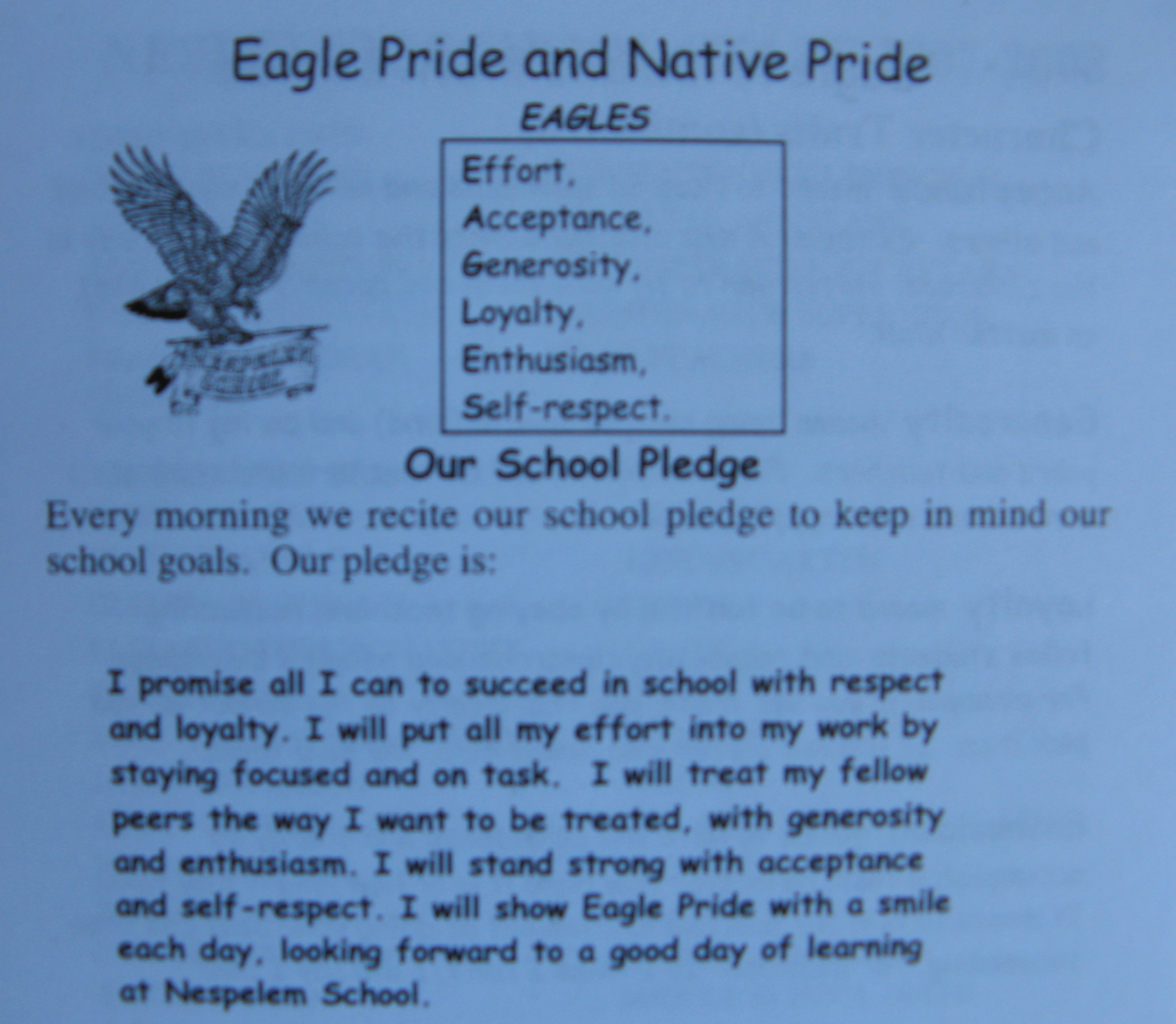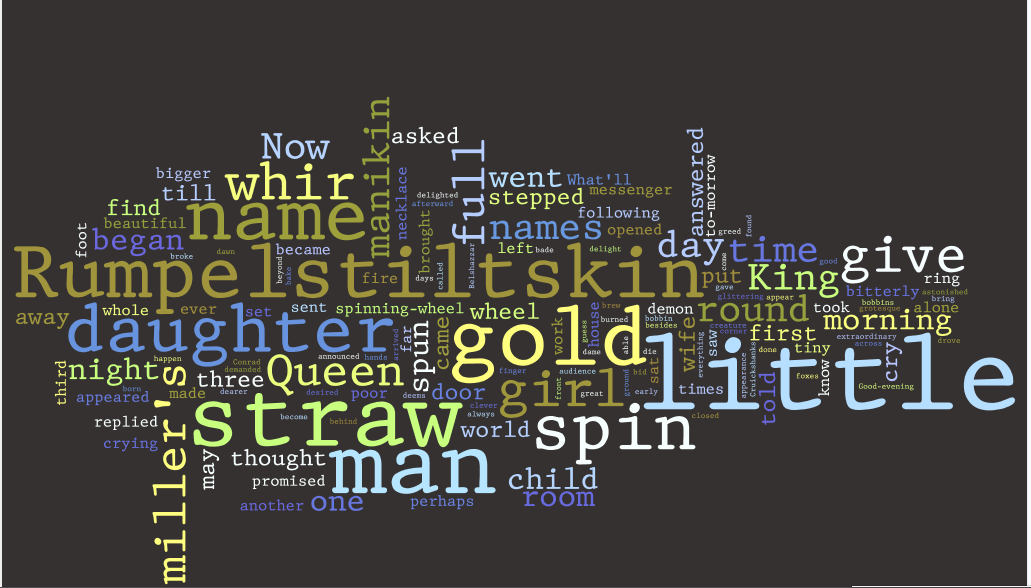Purpose Create an artistic impression of youself through art, essay and poetry. Follow these directions for your draft. Then create a "W8 2009 Code" Page to type up your list and begin your drafts and revisions.
Idea Lists Create lists of at least ten items to finish each of the following:
I like:
I am:
Of the eagle traits, I am __________ because__________ (See bottom of page; choose at least two)
Animals I am like are (at least three):
________ because ______
________ because ______
________ because ______
Ten years into the future, I will:
Image (Square)/Symbol
Read over all your lists. Try to think of images that represent you, your traits, your likes, the animals you associate with, etc. Use those images to create a square symbol that represents you as a whole person. Use large pictures and color.
Example:

Poem
Write a descriptive poem that expresses each of your traits represented in you symbols. Explain each image with examples and each major color as a symbol of one of your traits.
Hints:
Start out with the question: Who am I?
Then describe yourself using your images as examples.
The beginning to the example symbol might be:

Who am I?
I am a cat wrapped in a circle sitting in the sun napping for the afternoon. I show the pleasant and friendly things in life.
I am spicy pepperoni, sizzling in your mouth bursting with flavor like an enthusiastic cheerleader cheering for our team.
I am the blue sky providing sunlight and power, just as I provide kindness and help to my family. I help them like a wolf pack protects and provides for each other.
I am clicking keys, tapping my creative thoughts on the screen as I transform ideas into prose or poetry about the laughter of several grandkids chattering over their imaginary and evolving games in the shade of the sycamore in the backyard.
I am floating in the shade on the boat on a hot afternoon reading or ambling with Pooka on the grassy path near the calm lake listening to the sounds of seasonal birds just before gently swinging on the bench swing with grandkids by my side, relaxing after a fun day of togetherness.
Essay Write an engaging explanation of your symbol using as many of the list ideas as you can. Each list could be a paragraph, ending with your future goals.
Wordle Copy and paste your lists from your "W8 2009 Code" page into the site at:
http://www.wordle.net/create
to create a Wordle about you. Take a screen shot of it (ask how). We'll add it to your site with proper citation. If you write your name five times in the list, your name will show up largest.
Sample Lists and Wordle:
I like:
- floating in the shade on the boat on a hot afternoon reading
- ambling with Pooka on the grassy path near the calm lake listening to the sounds of seasonal birds
- listening to the laughter of several grandkids chattering over their imaginary and evolving games in the shade of the sycamore in the backyard
- hearing the click of keys tapping my creative thoughts on the screen as I transform ideas into prose or poetry
- gently swinging on the bench swing with grandkids by my side, relaxing after a fun day of togetherness
- transforming images of friends and family into a visual story through digital iMovies
- observing the "aha!" of students whose minds marvelously pop with a sudden understanding of a concept
- listening to the soft purr of my cat trusting his world to me
- melting flavor of dark chocolate slowly dissolving into a silky sliver in my mouth
- engaging dialogue on substantial topics with always sensitive and insightful Scott
I am
- diligent
- creative
- focused
- serious
- productive
- pleasant
- geeky
- inventive
- stubborn
- thoughtful
EAGLE Traits I show the EAGLE trait of effort when I write carefully and personally tuned lessons for my students.
I display acceptance when I acknowledge the differing needs and personalities of students.
I live enthusiasm when I stand in front of dull eyes and turn them into sparkles with words and ideas.
I exhibit generosity in spirit when I offer alternative assignments for students.
I demonstrate loyalty by teaching at Nespelem School for twenty-four years.
I model self-respect when I get my work done.
Animals I am like include
- cougars for their independent striving for survival
- wolf to help my family like a pack protects and provides for each other
- cat who likes nothing better than a nap in the sunshine
In the future ten years from now, I will - be volunteering to help in schools with computer projects
- be helping grandkids with projects
- hiking with Scott behind city hall
- sharing conversations with family and friends
- be writing a book about thinking
Wordle http://www.wordle.net/create

EAGLE Traits 








